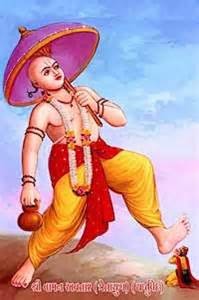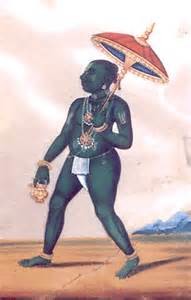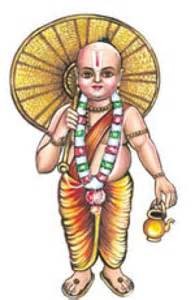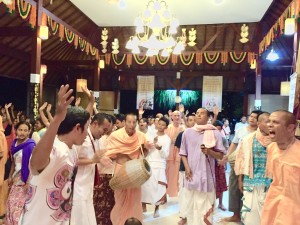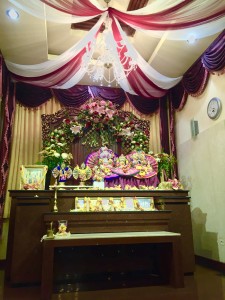HG Maha Tattva Prabhu / SB 10.87.31
Can’t judging be a means of self-defense?
→ The Spiritual Scientist
Answer Podcast:
Download by “right-click and save content”
The post Can’t judging be a means of self-defense? appeared first on The Spiritual Scientist.
You Will Never Become Tired
→ Japa Group
Civilization and Transcendence Ch. 7
If we correct with good intention, isn’t that good enough?
→ The Spiritual Scientist
Answer Podcast:
Download by “right-click and save content”
The post If we correct with good intention, isn’t that good enough? appeared first on The Spiritual Scientist.
Judgmental attitude ruins relationships
→ The Spiritual Scientist
Sunday Feast Lecture at New Ramana Rati, Alachua.
Lecture Podcast:
Download by “right-click and save content”
The post Judgmental attitude ruins relationships appeared first on The Spiritual Scientist.
Stockpiling Supplies
→ travelingmonk.com
Vyasa-puja Celebration, September 27, Carpinteria
Giriraj Swami
 The following devotees spoke in appreciation of Giriraj Swami: Gaudachandra dasa, Aditi dasi, Purusottama Ksetra dasa, Revati dasi, Sri Vallabha dasa, Madhava, Balarama dasa, Tulsi Manjari devi dasi, Sukumari dasi, Bhaktin Andrea, Bhakta Jared, Swarup Damodar dasa, Bhakta Rob, Rajani Priya devi dasi, Abhay, Radha Radhanatha devi dasi, Kandarpa Manjari devi dasi, Kunti devi dasi, Radha Priya dasi.
The following devotees spoke in appreciation of Giriraj Swami: Gaudachandra dasa, Aditi dasi, Purusottama Ksetra dasa, Revati dasi, Sri Vallabha dasa, Madhava, Balarama dasa, Tulsi Manjari devi dasi, Sukumari dasi, Bhaktin Andrea, Bhakta Jared, Swarup Damodar dasa, Bhakta Rob, Rajani Priya devi dasi, Abhay, Radha Radhanatha devi dasi, Kandarpa Manjari devi dasi, Kunti devi dasi, Radha Priya dasi.
“We were in Houston and you were speaking on the Bhagavad-gita at a house program. You were talking about impersonalists and how they think that Krishna is ultimately formless and that everything is Maya. You were saying how different people give impersonal commentaries of the Bhagavad-gita. I was impressed by how you were speaking in such a gentle, calm way yet the message was so heavy. I was amazed how you could be so sweet and so heavy at the same time. And, sometimes I get that from you as well.”
—Balarama dasa
——————————————
Devotees Appreciations
Address by Giriraj Swami
How to Live like Hanuman
He is always ready to serve: Hanuman…
→ Dandavats.com

How to Live like Hanuman
He is always ready to serve: Hanuman sits next to Lord Rama with one knee on the ground ready to spring into action. Love is not just an emotion nor a noun…it’s a verb. Love means service. When Hanuman found Rama he dedicated his life to helping Him find Sita. Connect with God, find a person who inspires you in bhakti and offer service. Lots of it. Like Hanuman.
Read the entire article here: http://goo.gl/Qr1bSk
Hare Krishna! How to Navigate the Challenge of Kali-yuga…
→ Dandavats.com

Hare Krishna! How to Navigate the Challenge of Kali-yuga (audio)
Vraja Vihari Das: The Vedas say we live in “Kali-yuga”, the age of quarrel and hypocrisy. Written thousands of years ago, these writings describe in much detail the ills of society today. They also describe the panacea for living a virtuous and spiritual life despite the challenges of this age.
Listen to it here: http://www.dandavats.com/?p=20116
Hare Krishna! What is the matter with the world
Srila…
→ Dandavats.com

Hare Krishna! What is the matter with the world
Srila Prabhupada: The animal part of a human being necessarily require food to eat, shelter to live in, protection from fear and gratification of senses. These four principles of life are common both to the man and the animals. A time is nearing when there will be no wheat-paddy in the field and no politician will be able to make a quick supply of bread. The food problem is already acute. The atheistic civilization is to be troubled more and more with the progress of materialism. We have such foretellings in the pages of Srimad-Bhagavatam. The more the people are turning to the atheistic, the more things of disturbing elements do appear before us. And that is the thing which matters at present. This is a wrong type of civilization.
Read the entire article here: http://www.dandavats.com/?p=6057
Taking Root
→ travelingmonk.com
A Second Channel (7 min video)
Indradyumna Swami: Following the…
→ Dandavats.com

A Second Channel (7 min video)
Indradyumna Swami: Following the success of our recent interview on national television here in Mongolia, another prominent channel, Soyongegeeeruulegch.tv, contacted us and proposed to record 5 separate, 45 minute shows with me. The next day I was in their studios for a marathon recording, changing my chaddar each session for some diversity. I spoke on a variety of Krsna conscious subjects, a few of which appear in this short video. When all was done, I asked the director of the station how many people would see the recordings. She replied, “We will broadcast one each day next week both in the morning and evening. So I suppose around 2 million people will hear from you.” Jaya Srila Prabhupada!
Watch it here: https://goo.gl/3gxY0F
Sivarama Swami on the European Migrant Crisis
Over the past few…
→ Dandavats.com

Sivarama Swami on the European Migrant Crisis
Over the past few weeks, in the midst of Europe largest political and humanitarian crisis since World War 2, the Hungarian Society for Krishna Consciousness have been actively involved in helping migrants and refugees stuck at the railways stations or crossing through the country. Devotees have distributed about 5,000 plates of hot meal, and 1.5 tons of fruits and other food items, while maintaining their usual program of feeding 2,000 marginalized Hungarians every day.
Read the entire article here: http://goo.gl/tJsE4e
Question: What is the best thing to do to cure our scars and in…
→ Dandavats.com

Question: What is the best thing to do to cure our scars and in particular how to cure bad relationships with devotees?
Kadamba Kanana Swami: One of my favorite stories that my mother used to tell me is about two princesses and one, when she would open her mouth, roses would come out and when the other one would open hers – frogs! Now, in our case, since we are vaisnavas we are trying for roses but every once in a while there is an inadvertent frog that just jumps out of your mouth and then what do you do!? Then you think, ‘I should not have said that!’ But you cannot swallow the frog – it is against the regulative principles! So once it is out there, it bounces around in all its ugliness and people may even put it on the internet or quote it in a vyasa-puja offering as some sort of funny pastime! Yes, it happens and we try to avoid these things, but it may still happen even when we try to avoid it. Then what do you do? Keep on trying to avoid and just get engaged in positive, glorifying Krsna, serving Krsna and doing all these things connected with devotional service. Then all the anarthas will just automatically be purified in the process of bhakti yoga – all the scars gone!
Read the entire article here: https://goo.gl/QC9fvX
Focus on the positive!
→ KKSBlog
(Kadamba Kanana Swami, 26 April 2015, Radhadesh, Belgium, Vyasa Puja Morning Lecture, Caitanya Caritamrta Madhya Lila 24.124)
Question: What is the best thing to do to cure our scars and in particular how to cure bad relationships with devotees?
By having good relationships with devotees! Focus on the positive, do not focus on scars. Sometimes we read about the anarthas and so on, but we should not spend our whole spiritual life just meditating on overcoming anarthas. Certainly, anarthas are an element in our philosophy and one should understand the nature of these anarthas, reading about it for example in Madhurya Kadambini where Visvanath Cakravarti Thakur gives really nice explanation about the anarthas. The point is that we do take note of anarthas and on how to overcome them, but the essence is – let us just focus on the positive! Avoid the negative activities as much as you can and meanwhile where it is still difficult, then we try to just get absorbed in devotional service and that will purify us.
One of my favorite stories that my mother used to tell me is about two princesses and one, when she would open her mouth, roses would come out and when the other one would open hers – frogs! Now, in our case, since we are vaisnavas we are trying for roses but every once in a while there is an inadvertent frog that just jumps out of your mouth and then what do you do!? Then you think, ‘I should not have said that!’ But you cannot swallow the frog – it is against the regulative principles! So once it is out there, it bounces around in all its ugliness and people may even put it on the internet or quote it in a vyasa-puja offering as some sort of funny pastime! Yes, it happens and we try to avoid these things, but it may still happen even when we try to avoid it. Then what do you do? Keep on trying to avoid and just get engaged in positive, glorifying Krsna, serving Krsna and doing all these things connected with devotional service. Then all the anarthas will just automatically be purified in the process of bhakti yoga – all the scars gone!
How and why Sita Rama Prabhu’s family spent the night in Budapest airport detention centre
→ SivaramaSwami.com
The post How and why Sita Rama Prabhu’s family spent the night in Budapest airport detention centre appeared first on SivaramaSwami.com.
Radha is Vibhavari devi
→ SivaramaSwami.com
The post Radha is Vibhavari devi appeared first on SivaramaSwami.com.
Sivarama Swami on the European Migrant Crisis
→ ISKCON News

With the European public completely divided over how to treat refugees poring in from war-torn countries, whether Europeans should welcome them or be afraid of them, likewise, being at the epicenter of the crisis, Hungarian devotees have also expressed their concerns about the issue. Sivarama Swami addresses some of these concerns.
India’s Ancient and Great Maritime History
This shows how…
→ Dandavats.com

India’s Ancient and Great Maritime History
This shows how ancient Vedic culture was able to reach many areas of the globe. We should first take into account that ancient India, which was centered around the Indus Valley years ago, and was already well developed before 3200 BCE, stretched from Afghanistan to the Indian Ocean and points farther east and north, the largest empire in the world at the time. But its influence spread much farther than that. During its peak developments, it had organized cities, multistory brick buildings, vast irrigation networks, sewer systems, the most advanced metalwork in the world, and a maritime trade network that incorporated the use of compasses, planked ships, and trained navigators that reached parts of western Asia, Mesopotamia, Africa, and other ports far beyond their borders. 1 So they were certainly capable of ocean-going trips that could have reached even to the Americas.
Read the entire article here: http://www.dandavats.com/?p=20110
Hare Krishna! Canada Rugby World Cup team visit ISKCON…
→ Dandavats.com

Hare Krishna! Canada Rugby World Cup team visit ISKCON Leicester
The Canada Rugby World Cup Team attended the ISKCON Leicester Kirtan Fest this Sunday 27th September. The Canadian Team, who are in the UK for the World Cup tournament, were walking through Leicester’s City Centre, when they heard the sound of kirtan coming from the magnificent temple. Ananda Monet was leading a beautiful kirtan, and they were warmly welcomed by Leicester’s Bhakta Ash. Still in their red training tops, the rugby stars enquired about the festival, the significance of the Hare Krishna mahamantra, and about the ISKCON Centre in Leicester. In his usual, friendly way, Ash asked them to read and chant the Hare Krishna mahamantra, which they did so happily. The Canadian Team then met some devotees, and spoke to young 8-year old devotee who also plays rugby in Leicester.
Read the entire article here: http://www.dandavats.com/?p=20107
Hare Krishna! WSN August 2015 – World Sankirtan Newsletter
For…
→ Dandavats.com

Hare Krishna! WSN August 2015 – World Sankirtan Newsletter
For the pleasure of Srila Prabhupada this report contains the following results of book distribution for the month of August 2015 from the whole planet. World Totals, Monthly Congregation and Weekend Warriors, Monthly Continents, Monthly Top Ten Temples by Size, Monthly Top Ten Temples by Continent, Monthly Top Teams and Individuals, Monthly All Countries, Monthly All Temples, Monthly All Prabhupada Disciples, Cumulative Top Ten Countries, Cumulative Top Ten Temples, Cumulative Top 50 Individuals Worldwide
Read the entire article here: http://www.dandavats.com/?p=20105
Darshan – Sep 28th- Appearance of Rangadevi and Sudevi
→ Mayapur.com
The post Darshan – Sep 28th- Appearance of Rangadevi and Sudevi appeared first on Mayapur.com.
SB 07 05 04 By HG Jananivas Prabhu at ISKCON Juhu on 11 Sep 2015
→ Gouranga TV - The Hare Krishna video collection
SB 07 05 04 By HG Jananivas Prabhu at ISKCON Juhu on 11 Sep 2015
Lord Vamana
→ Ramai Swami
“O Kesava! You assumed the form of Vamana to trick the great demon Bali Maharaja by Your steps, and to purify all living entities by the water that emanated from the nails of Your lotus feet. All glories unto You, Lord of the universe.”
Lord Vamana’s appearance was observed at Jagannatha Gauranga temple in Bali with abhiseka, kirtan, recital and wonderful feast.
HH Bhakti Vikasa Swami – SB 2.1.12 / Sunday feast
→ Kalachandji's Audio Archive
HH Bhakti Vikasa Swami – Initiation Lecture & Ceremony
→ Kalachandji's Audio Archive
HG Maha Tattva Prabhu – The Ten Offenses to the Holy Name
→ Kalachandji's Audio Archive
HH Bhakti Vikasa Swami – Bg 4.34
→ Kalachandji's Audio Archive
HH Bhakti Vikasa Swami – Morning class
→ Kalachandji's Audio Archive
Try To Listen To One Mantra
→ Japa Group
From Japa: Nine Keys from the Siksastakam to Improve Your Japa
by Bhurijana dasa
Friday, September 25th, 2015
→ The Walking Monk
My dear friend, Pyari Mohan, the friendly head honcho of the Iskcon Centre in
Now, Pyari is a magician. Yes, he does magical tricks. At his home in
What really got me thinking about how out-of-the-ordinary the day was (magical even), I had in my thoughts the young Rastafarian chap that I chatted with on Monday night at the festival in honour of Krishna's consort, Radha. Tri'van is his name. While we were chanting, he happened to walk by. He had felt that maybe he wasn't liked at the event but I believe he changed his outlook when we greeted him warmly on the street.
Now this Tri'van is a special soul. I invited him to join me on the continuation of my walk and being his day off he accepted my offer. We let time slip away like anything as we immersed in conversation. He had questions. So did I. I like to be informed about what's going on these days. We reciprocated with answers. I shared my Krishna Conscious viewpoint. When it came to asking about his birthday, I knew intuitively he was an October 5th boy, like myself, before he could say. When it actually came out of his mouth to confirm, it had me wonder about how magical a day could be. It all climaxed with a good swim in
Thursday, September 24th, 2015
→ The Walking Monk
Apple Monk
On this trail a police officer pulled over and asked, "Going for a walk?"
Answer was "Yes! To
Interaction with people is limited. In Staffordville we actually connected, but briefly, with pedestrians, otherwise you can say that most everyone is very car-bound. This is the destiny of the world it seems. People are cut-off from each other by way of the automobile. At least on two occasions today a motorist stopped asking for directions, which left us unaware of where to point. Anyways, it's great when there's human interaction.
One more interaction was with water. A good swim in
Radhastami initiates
→ SivaramaSwami.com
Valkó György (Bud)
Gadāi Dāsa – servant of Gadādhara Paṇḍit
Kovács Gábor (Szolnok)
Gaṅgā-prasāda Dāsa — servant of the mercy of Gaṅgā Devī
Galavits Tibor (Szombathely)
Kuru-śreṣṭha Dāsa – servant of Parīkṣit Mahārāja, the best of the Kurus
Gaura-priya (NVD)
Nīla-kamala Devī Dāsī – servant of the blue lotus, Kṛṣṇa
Egervári Szilvia (NVD)
Śāradīyā Devī Dāsī – servant of Śrīmatī Rādhārāṇī, who is Goddess of the autumn season, when the śāradīya-rāsa takes place
Csorba Szilvia (NVD)
Śaktimatī Devī Dāsī – servant of Śrīmatī Rādhārāṇī who possesses great prowess
Molnár Ágnes (Szolnok)
Aśoka-mañjarī Devī Dāsī – servant of one of the young maidservants of Śrīmatī Rādhārāṇī
Orha Anikó (Bud)
Aṁśumati Devī Dāsī – servant of Śrīmatī Rādhārāṇī, who is glowing with rays of love for Kṛṣṇa
Bornemissza Ildikó (Bud)
Kusumañjali Devī Dāsī – servant of an offering of a handful of flowers
Bhn. Katyerina (Bud)
Kālaka-maṇi Devī Dāsī – servant of the dark blue gem, Kṛṣṇa
Fröschl Eszter (Bud)
Sanātanī Devī Dāsī – servant of Śrīmatī Rādhārāṇī, whose love for Kṛṣṇa never wavers and who is the
Bozóki Diána (Bud)
Daivī-śakti Devī Dāsī – servant of the transcendetal potency of the Lord
Bhn.Tanya (Bud)
Taraṅginī Devī Dāsī – servant of Śrīmatī Rādhārāṇī, who is full of waves of love for Kṛṣṇa
Csíkszeredai Sári (Bud)
Sulakṣaṇā Devī Dāsī – servant of Śrīmatī Rādhārāṇī, who is the personification of auspicious qualities
Talló Virginia (Bud)
Vinītā Devī Dāsī -servant of Śrīmatī Rādhārāṇī, the embodiment of modesty
Bhn. Vibha (UK)
Vibhāvarī Devī Dāsī – the servant of Śrīmatī Rādhārāṇī, the Goddess of night (who meets Kṛṣṇa on stary nights)
The post Radhastami initiates appeared first on SivaramaSwami.com.
Conference on Farms and Cows (Album with photos)
ISKCON Daiva…
→ Dandavats.com

Conference on Farms and Cows (Album with photos)
ISKCON Daiva Varnasrama Ministry [IDVM] in association with Cow Protection Ministry organised a three days Conference on Farms and Cows which started on 22nd of September 2015 to 25th of September at Neelachal Dham, (Under ISKCON Juhu) Talaseri. Many delegates from various farm communities had taken this wonderful opportunity to share their experiences, ideas and concepts in this conference.
Find them here: https://goo.gl/savra0
Hare Krishna! Visvarupa-mahotsava and Srila Prabhupada’s…
→ Dandavats.com

Hare Krishna! Visvarupa-mahotsava and Srila Prabhupada’s Sannyasa
Giriraj Swami: Today is Visvarupa-mahotsava, the date on which Lord Caitanya’s older brother, Visvarupa, took sannyasa, the renounced order of life. And on the same date some four hundred and fifty years later, our own spiritual master, Srila Prabhupada, also accepted sannyasa. According to Vedic scripture, Lord Caitanya is Krsna Himself, the Supreme Personality of Godhead, come in the present age in the role of a devotee. In the previous age, Lord Krsna came in His original feature and spoke the Bhagavad-gita, and at the conclusion He instructed, sarva-dharman parityajya mam ekam saranam vraja: give up all other duties and surrender unto Me. But people could not understand or appreciate Lord Krsna’s instruction. So later, about five hundred years ago, the same Krsna came again, not in His original form but in His devotional form as Lord Caitanya. And Lord Caitanya taught us how to serve Krsna, how to worship God in the present age.
Read the entire article here: http://www.dandavats.com/?p=20097
Sri Visvarupa-mahotsava and Srila Prabhupada’s Sannyasa
Giriraj Swami
Today is Visvarupa-mahotsava, the date on which Lord Caitanya’s older brother, Visvarupa, took sannyasa, the renounced order of life. And on the same date some four hundred and fifty years later, our own spiritual master, Srila Prabhupada, also accepted sannyasa.
According to Vedic scripture, Lord Caitanya is Krsna Himself, the Supreme Personality of Godhead, come in the present age in the role of a devotee. In the previous age, Lord Krsna came in His original feature and spoke the Bhagavad-gita, and at the conclusion He instructed, sarva-dharman parityajya mam ekam saranam vraja: give up all other duties and surrender unto Me. But people could not understand or appreciate Lord Krsna’s instruction. So later, about five hundred years ago, the same Krsna came again, not in His original form but in His devotional form as Lord Caitanya. And Lord Caitanya taught us how to serve Krsna, how to worship God in the present age.
Lord Caitanya taught various methods of worship, but He especially emphasized the chanting of the holy names of God, or Krsna. In particular, He quoted a verse from the Brhan-Naradiya Purana (38.126):
harer nama harer nama
harer namaiva kevalam
kalau nasty eva nasty eva
nasty eva gatir anyatha
“One should chant the holy name, chant the holy name, chant the holy name of Hari, Krsna. In this age of Kali, there is no other way, no other way, no other way for spiritual realization.”
He acted like a teacher who shows students how to write the alphabet. The teacher stands in front of the class and writes on the board, “A, B, C, D.” She has no need to practice writing, but she shows by her own example how to form the letters properly. In the same way, God, Krsna, had no need to worship, but to set the example for us, so that we could learn how to worship God in the best way in the present age, He came as Lord Caitanya and taught and demonstrated the chanting of the holy names.
When Lord Caitanya appeared, the social and spiritual system called varnasrama-dharma was still prevalent in India. In this system there are four social and four spiritual divisions, all necessary for society to function properly. Although we may not refer to them by the same terms, and although the system has not been developed as systematically and scientifically as in Vedic culture, still, by the arrangement of nature, the divisions still exist. In the Bhagavad-gita Krsna says, catur-varnyam maya srstam guna-karma-vibhagasah: “According to the three modes of material nature and the work associated with them, the four divisions of human society are created by Me.” (Bg 4.13) So, the four social orders, or broad divisions of occupational duties, are created by Krsna.
The four divisions include the intelligent class, who are teachers and priests—mainly teachers. Then there is the martial or administrative class, comprised of rulers and warriors; they govern and protect the citizens. There is the vaisya, or productive class, who engage in agriculture—farming and cow protection—and, with any surplus, in trade. And there is the service class, or workers, who perform services to support the other three classes.
When a person hears the description of the different social orders and duties, he or she may be alerted to the possibilities for exploitation and domination of the “lower” classes by the “higher.” But in Vedic society the different members work cooperatively for the common good, ultimately for the pleasure of God. In the physical body there are natural divisions—the head, the arms, the stomach, the legs—and they all have different functions. But they all cooperate for the benefit of the whole. In the social body, the brahmanas are compared to the head—they give guidance. The ksatriyas are compared to the arms—they protect the body. The vaisyas are compared to the stomach—they provide food for the body. And the sudras, or workers, are compared to the legs—they carry the rest of the body where it wants to go. There is no question of competition among the different parts of the body—or exploitation. They all work for the good of the whole.
Apart from the social divisions, there are four spiritual divisions. These are also natural, especially in a culture meant for self-realization and God realization, which Vedic culture is. The first order is the brahmacaris, celibate students. In the traditional system, the brahmacari would study in the asrama of the guru, in the gurukula. He would be trained mainly in principles of good character. And because the main emphasis was on good character and spiritual development, the teachers had to be spiritually qualified.
Here we can see the defect in modern education, where emphasis is given to material knowledge without much consideration of personal character. Now practically no spiritual or moral qualification is required of teachers. They may drink, they may smoke, they may gamble, they may do all sorts of nonsense in their “private” lives, but if they know the subject in a material way, they are considered qualified to teach. But in the Vedic system, because the emphasis was on moral character and spiritual development, the teachers, the brahmanas, had to be exemplary. And in addition, they had to know the content of the subjects they taught. The exemplar in the Vedic system was called acarya. Acarya means “one who teaches by example”— not that in the classroom the teacher says, “You should not smoke” but then outside the classroom he or she smokes, or that the teacher says, “You shouldn’t drink” but then outside he or she drinks.
A friend of ours in Mumbai was attending an international conference on drug abuse in Delhi. She is a devotee, and she works with a lot of underprivileged people in the slum areas of Mumbai. And in her own way, she tries to introduce Krsna consciousness, seeing how it can transform people’s lives, how people who were addicted to drugs can give them up with the spiritual strength gained by chanting and other practices—by the grace of God. So, she went to the conference, and during the evenings her colleagues would get together and have parties and drink and smoke and take drugs. Then, during the day, they would meet to discuss what to do about the problem of substance abuse. Socially, she would be with them. After all, they were her friends and colleagues, but when she attended their parties, they would insist, “Why don’t you have a drink? Have a smoke. Have this, have that.” And she would always refuse.
One night, their party was busted by the police. The only one of them of good character, of spotless character, was our friend, the devotee. They knew that her word would be accepted because she was strict in her habits. So her colleagues appealed to her to make up some story that they were doing some experiment, some research, on taking drugs. Whatever happened in the end, the point I am making is that in Vedic culture the teachers were supposed to be exemplary. Their character was considered one of their main qualifications as teachers.
So, the first order is brahmacari—celibate students living in the asrama of the guru, the spiritual preceptor. The second order is grhastha—married, or household, life. At the age of twenty or twenty-five, the young man could choose to enter the grhastha-asrama. At such a time he would take permission from the guru to leave the gurukula, and there would be a ceremony comparable to today’s graduation. The young man would leave and go out into the world, bringing with him all the principles of moral character and spiritual development that he had learned in the asrama of the guru.
Then, after living in the grhastha-asrama, having children and providing for their future, the husband and wife would enter the vanaprastha-asrama, retired life. They would retire, not to while away their time in idle pursuits and reminiscences, but to realize God. Of course, there is no harm in reminiscing sometimes, but they had a positive engagement, and their positive engagement was spiritual perfection.
The first instruction of the Bhagavad-gita is:
dehino ’smin yatha dehe
kaumaram yauvanam jara
tatha dehantara-praptir
dhiras tatra na muhyati
“As the embodied soul continuously passes, in this body, from boyhood to youth to old age, the soul similarly passes into another body at death. A sober person is not bewildered by such a change.” (Bg 2.13) In other words, the soul is distinct from the body.
Later in the Gita Krsna says that He has two energies: the superior energy, or para-prakrti, which is spiritual, and the inferior energy, or apara-prakrti, which is material.
bhumir apo ’nalo vayuh
kham mano buddhir eva ca
ahankara itiyam me
bhinna prakrtir astadha
apareyam itas tv anyam
prakrtim viddhi me param
jiva-bhutam maha-baho
yayedam dharyate jagat
“Earth, water, fire, air, ether, mind, intelligence, and false ego—all together these eight constitute My separated material energies. Besides these, O mighty-armed Arjuna, there is another, superior energy of Mine, which comprises the living entities who are exploiting the resources of this material, inferior nature.” (Bg 7.4–5) The spiritual energy is conscious and eternal, whereas the material energy is unconscious and temporary. Physical bodies are made of the eight material elements, inferior energy, but the soul within each body is made of the superior, spiritual energy.
The soul continues to live after the death of the body. In one sense there is no death of the body, because the body is always dead. It is just a machine, and the soul is the driver of the machine who makes the machine work. When the soul is in the body, the body appears to be alive. When the soul leaves the body, we declare that the body is dead, because the soul has left. Now, someone might argue that the soul, or life, is created by a particular chemical combination, that when the chemicals or atoms and molecules combine in a certain way, life is produced. But if that were the case, death would be merely a breakdown in the chemical combination. If life were created by a certain combination of chemicals, then death would mean that the combination had broken down, and the implication would be that if we restored the combination, the person would come back to life. A car is a combination of material elements. The car may break down, but if you keep replacing the material elements, the car will work again. Even if the car is from 1900, if you replace the engine, replace the carburetor, replace the steering—whatever the parts are—if you keep replacing them, it will work again. Yet although people have tried to become immortal since the beginning of time, they have never succeeded in bringing a dead person back to life, because life is not a combination of material elements. Life is the quality of the spiritual soul, the superior energy of the Lord. Once the spiritual soul leaves the body, we can do nothing to bring the body back to life, because the living force has left.
So the question is, “What happens to the living force when it leaves the body? What happens to the soul?” According to the Bhagavad-gita, the soul, depending on its activities or karma, will enter a particular type of body. If the car breaks down and is not worth fixing, the driver will get another car. Now, what kind of car he gets will depend on how much he can afford. If the person has been earning and saving, he can get a luxury car. If the person has been working but not earning so much, or has been saving but not that much, he might get an ordinary car. If the person has been irresponsible or is unemployed, he might not be able to afford a car at all. He might have to get a motorcycle or a scooter or a bicycle, or he may just have to walk. In the same way, the body we get in the next life will depend on how we conduct ourselves in the present life. If we are responsible and follow a disciplined, moral, spiritual life, we will get a better body. In fact, if we are fully self-realized or God-realized, fully surrendered to God, we can get a spiritual body and go to the spiritual world and live with God in the spiritual kingdom. Otherwise, if we are not perfect but are good, we will get a good material body in the material world; we will take birth on a higher planet—on a heavenly planet—or on earth in a better situation, with better opportunities for education; we may be born with more intelligence, with more opulence, with better looks, and so on. And if we have been negligent in our duties toward God, if we have been immoral or irreligious, we will be born in an unfortunate situation on earth in a human body or even in a lower species of life. Or we may have to take birth on a hellish planet and suffer there for some time.
In the Vedic system, by the time a person reaches the age of fifty or so, he or she should have fulfilled his or her family responsibilities and be free to leave the work and assets to the next generation, to concentrate on spiritual development. Old age is a warning or a reminder that one will have to leave the body, and so one will consider, “How can I use my time to reach the best destination?” It is as if you are living in a house and you get notice that you will have to vacate. Of course, you will continue to take care of the house to some degree, but you will not put all your energy into taking care of a house that you must soon vacate. Rather, you will consider, “Where am I going to move?” That is the guiding principle in Vedic civilization: “Where am I going to go after I leave the present body, this present habitat?”
The best destination one can achieve is the spiritual kingdom of God, and for that one must engage in spiritual practices, especially the chanting of the holy names of God, by which one will develop love for God. Such practices are common to different religious traditions. Although here we speak on the basis of the Bhagavad-gita, on the basis of Vedic knowledge, the principle of chanting God’s name is in practically every tradition; the principle of praying to God, glorifying God, learning about God from scriptures and teachers, and serving God and His creatures—ultimately to develop love for God—is part of every bona fide religious tradition. As the Bible says, “Thou shalt love the Lord thy God with all thine heart, and with all thy soul, and all thy might. And these words, which I command thee this day, shalt be in thine heart. Thou shalt teach them diligently unto thy children, and shalt talk of them when thou sittest in thine house, and when thou walkest by the way, and when thou liest down, and when thou risest up. And thou shalt bind them for a sign upon thine hand, and they shall be as frontlets between thine eyes. And thou shalt write them upon the posts of thy house, and on thy gates. . . . Know therefore that the Lord thy God, he is God, the faithful God, which keepeth covenant and mercy with them that love him.” This passage from Deuteronomy (6.5–9, 7.9) pretty well describes the life of devotees. While at home or on a path, sitting or walking, lying down or getting up—wherever they are and in whatever they do—they are conscious of God, and they teach their children the same principle: to be God conscious.
Again, the ideal of singing the name of the Lord or praising the name of the Lord is common to every tradition. The Bible, for instance, enjoins us: “Give thanks unto the Lord, call upon His name, make known His deeds among the people. Sing unto Him, sing psalms unto Him, talk yet of all His wondrous works. Glory ye in His holy name; let the heart of them rejoice that seek the Lord. Seek the Lord and His strength, seek His face continually.” (I Chronicles 16.7–11) But the actual process of chanting, especially the Hare Krsna maha-mantra, is elaborated most scientifically in Vedic literature. Srimad-Bhagavatam in particular gives precise and detailed information about God and the process to reach Him. Otherwise, one could question, “If the principles are the same, why did you have to take to Krsna consciousness? Why could you not have just been a good Christian or Jew or whatever?” The answer is that this method, technically called bhakti-yoga, is scientific and practical, and that the knowledge of God given in the Bhagavad-gita and Srimad-Bhagavatam is most detailed. To love someone, you must know the person: “To know him is to love him.” To know God is to love Him. Otherwise, we may talk theoretically about loving God, but if we don’t know Him, how can we really love Him?
God in the most complete conception is both male and female: Radha and Krsna. Still, for simplicity’s sake, we often use the masculine pronoun. In any case, we learn about God in detail from sastra, especially Srimad-Bhagavatam. As our spiritual master, Srila Prabhupada, used to say, “Every religion will teach that you should love God, but who is God? The Vedic scriptures tell you His name, His address, His telephone number—all the details—about His family, His friends, His habits, His hobbies, His pastimes.” That is why we have taken to Krsna consciousness: to learn about God and how to reach Him—in detail. Even then, as Srila Prabhupada said, “You don’t have to give up being a Jew or a Christian or a Muslim or whatever; you can add Krsna consciousness and become a better Hindu or a better Christian or a better Jew.” It is not a religion in the sense that you have to convert, like one gives up one faith and accepts another, but you can remain whatever you are and add bhakti-yoga. With the physical practices of yoga, hatha-yoga, people don’t mind—they may be Christian or Jewish or Muslim and still practice yoga. So too you can practice bhakti-yoga whatever your faith may be. But this yoga will help you to come closer to God and have direct realization of God.
In varnasrama-dharma, the last stage, after retired life, is called sannyasa, renounced life. Although in retired life the husband and wife may stay together, their aim is God consciousness. They often retire to a holy place to worship and serve God, associating with learned scholars and saintly persons, so that they can come closer to God and be with God in their next life. But in the fourth stage, which is not meant for everyone and is not generally recommended in the present age, the husband and wife do not remain together. Also, although the brahmacari will usually marry and have children, in exceptional cases he may not; he may remain in the brahmacari-asrama for his entire life, or at some point proceed directly from the brahmacari– to the sannyasa-asrama. In the renounced order too there are different stages, four stages, but in the present age the recommended process for the renounced order is to spread the message of Godhead—to travel and preach the message of Godhead, and to write articles and books on the science of God.
So, these are the four social and spiritual orders, and from that background we come to today’s occasion: Visvarupa-mahotsava. As mentioned earlier, Lord Caitanya is Krsna Himself, and He appeared on earth, as did Krsna, like an ordinary person. Yet although He seemed to take birth like an ordinary person, His birth was not ordinary; it was divine. Just as a dramatic actor plays the part of a family member on stage, so Lord Caitanya appeared in a particular family on earth. And in the family in which He chose to appear, He had an older brother named Visvarupa (who Himself was an incarnation of Lord Balarama, Krsna’s first expansion).
From the very beginning, Visvarupa was attracted to devotional service to Lord Krsna. As soon as He was old enough, He would go daily to bathe in the Ganges and then proceed to the home of Advaita Acarya to engage in topics of Krsna. He had no interest whatsoever in material life. And so, when he heard that arrangements were being made for his marriage, Visvarupa left home and took sannyasa. At that time, Lord Caitanya tried to console His aggrieved parents: “My dear mother and father, it is very good that Visvarupa has accepted the sannyasa order, for thus He has delivered both His father’s and His mother’s family.”
As a sannyasi, Visvarupa’s name was Sankararanya Svami. He traveled from one place of pilgrimage to another, throughout the country. Finally, He attained perfection—entered the spiritual world after giving up His mortal body—in Pandarapura, a holy place in Maharashtra. As cited by Srila Prabhupada, the Gaura-candrodaya states that after His departure, Visvarupa remained mixed within Sri Nityananda Prabhu. The date on which Visvarupa took sannyasa is celebrated today as Visvarupa-mahotsava.
Now we come to our spiritual teacher and founder-acarya, His Divine Grace A. C. Bhaktivedanta Swami Prabhupada. He was born in Calcutta in 1896 in a very pious family. He was well educated and attended Scottish Churches’ College, one of the most prestigious colleges in Calcutta. As a young man he married and had a child, but soon he met a very saintly person, Srila Bhaktisiddhanta Sarasvati Gosvami Maharaja, and was impressed by him. Srila Bhaktisiddhanta requested that Srila Prabhupada take up the mission of Sri Caitanya Mahaprabhu and spread His message all over the world, specifically in English. From their very first meeting in 1922, Srila Prabhupada accepted Srila Bhaktisiddhanta in his heart as his spiritual master, and eleven years later, in Allahabad, he was formally initiated as Abhay Caranaravinda dasa. Abhay means “fearless” and caranaravinda means “the lotus feet” of Krsna. By taking shelter of the lotus feet of Krsna one becomes fearless—even of death, the most fearful situation in the material world.
Srila Prabhupada always remembered the order of his guru maharaja, and in his household life he began the fortnightly magazine Back to Godhead. He personally wrote all the articles, got the issues printed, and distributed them. He would go on foot to the teashops in Delhi and approach the customers with his magazine. Later, a friend suggested that magazines might be thrown away but that books would remain forever. And so Srila Prabhupada turned his attention to translating the Bhagavad-gita, and later Srimad-Bhagavatam.
In 1950, Srila Prabhupada retired from family life as a vanaprastha. He traveled to Jhansi and tried to start his guru maharaja’s mission there. He was on the verge of acquiring an ideal property to use as a center, but in the end there was some politics with the governor’s wife and the deal fell through. So he left Jhansi and came to Mathura, a holy place associated with Lord Krsna’s pastimes, to the Kesavaji Gaudiya Matha, where he served in cooperation with one of his godbrothers, His Holiness Bhaktiprajnana Kesava Maharaja.
Even in his household life, Srila Prabhupada had dreams in which his guru maharaja was calling him to leave his family and follow him. Srila Prabhupada would wake up and feel horrified: “How can I take sannyasa?” He continued to have the dream, and in Mathura, Kesava Maharaja advised him, “To really preach the message of Caitanya Mahaprabhu and fulfill Guru Maharaja’s order, you must take sannyasa.” So, on September 17, 1959, on Visvarupa-mahotsava, the same date that Visvarupa, the older brother of Sri Caitanya Mahaprabhu, took sannyasa, Srila Prabhupada accepted the renounced order of life at the Kesavaji Gaudiya Matha in Mathura. At the end of the ceremony Kesava Maharaja asked him to speak. Although the common language was Hindi, Srila Prabhupada thought of his mission and the order of his guru maharaja,and he spoke in English. Now he was Bhaktivedanta Swami, and “completely ready to discharge the order of his spiritual master.”
It is most fortunate for all of us today that Srila Prabhupada did take sannyasa. After he translated Srimad-Bhagavatam, First Canto, in three volumes, he felt ready to travel. Later he would remark, “When I decided to go to foreign countries, I thought of New York. Generally they go to London, but I thought, ‘No, I will go to New York.’ ” He managed to procure free passage in the passenger cabin on a cargo carrier of the Scindia Steam Navigation Company, and so he crossed the Atlantic on board the Jaladuta, suffering two heart attacks on the way. Then, in New York, for almost one year, he struggled alone. No one took up his message seriously. He would stay at different people’s places, but he had no place of his own—and almost no money. He felt so discouraged that from time to time he would go to the Scindia office to see when the next boat was departing for India. But—again fortunately for us—he never left.
Hare Krsna.
[A talk by Giriraj Swami on Visvarupa-mahotsava, September 17, 2005, Carpinteria, California]
Hare Krishna! Love Conquers All
Radhanath Swami: “The Latin poet…
→ Dandavats.com

Hare Krishna! Love Conquers All
Radhanath Swami: “The Latin poet Virgil, has written, ‘Love conquers all’. The second part of what he wrote, in many ways is instrumental. He said, ‘Love conquers all, so let us all be conquered by love’. This is the principle of bhakti. The first and great commandment is to love God with all your heart, mind and soul, and the natural consequence of that is that you will love your neighbor as yourself. And according to the Bhagavad-gita you will see every living being as your neighbor.” “But that actual ecstasy of loving God really comes when we become conquered by God’s love. Krishna, who is the Supreme Absolute Truth, the one God who has many names and has descended into this world many times, in his fullest expression, comes once in a day Brahma to this world. Sri Radha comes with him. The one Supreme God is ever as two personalities, Krishna, the Supreme object of love, and Srimati Radharani, who is the ultimate supreme lover.”
Read the entire article here: http://www.dandavats.com/?p=20094
How can we practice bhakti-yoga on a daily basis?
→ The Spiritual Scientist
Answer Podcast:
Download by “right-click and save content”
The post How can we practice bhakti-yoga on a daily basis? appeared first on The Spiritual Scientist.
How can we control the unstable mind?
→ The Spiritual Scientist
Answer Podcast:
Download by “right-click and save content”
The post How can we control the unstable mind? appeared first on The Spiritual Scientist.
How can we set spiritual goals that harmonize with our material goals?
→ The Spiritual Scientist
Answer Podcast:
“Download by “right-click and save content”
The post How can we set spiritual goals that harmonize with our material goals? appeared first on The Spiritual Scientist.






















